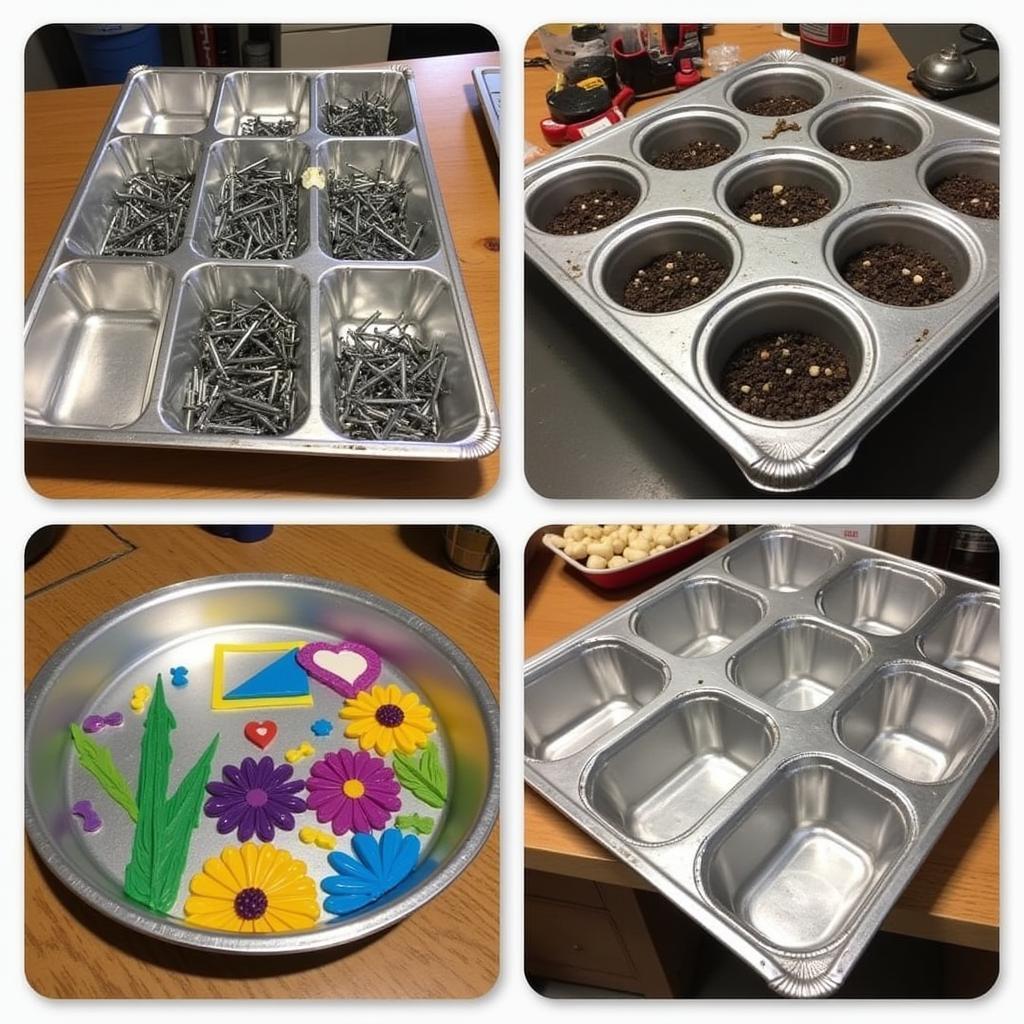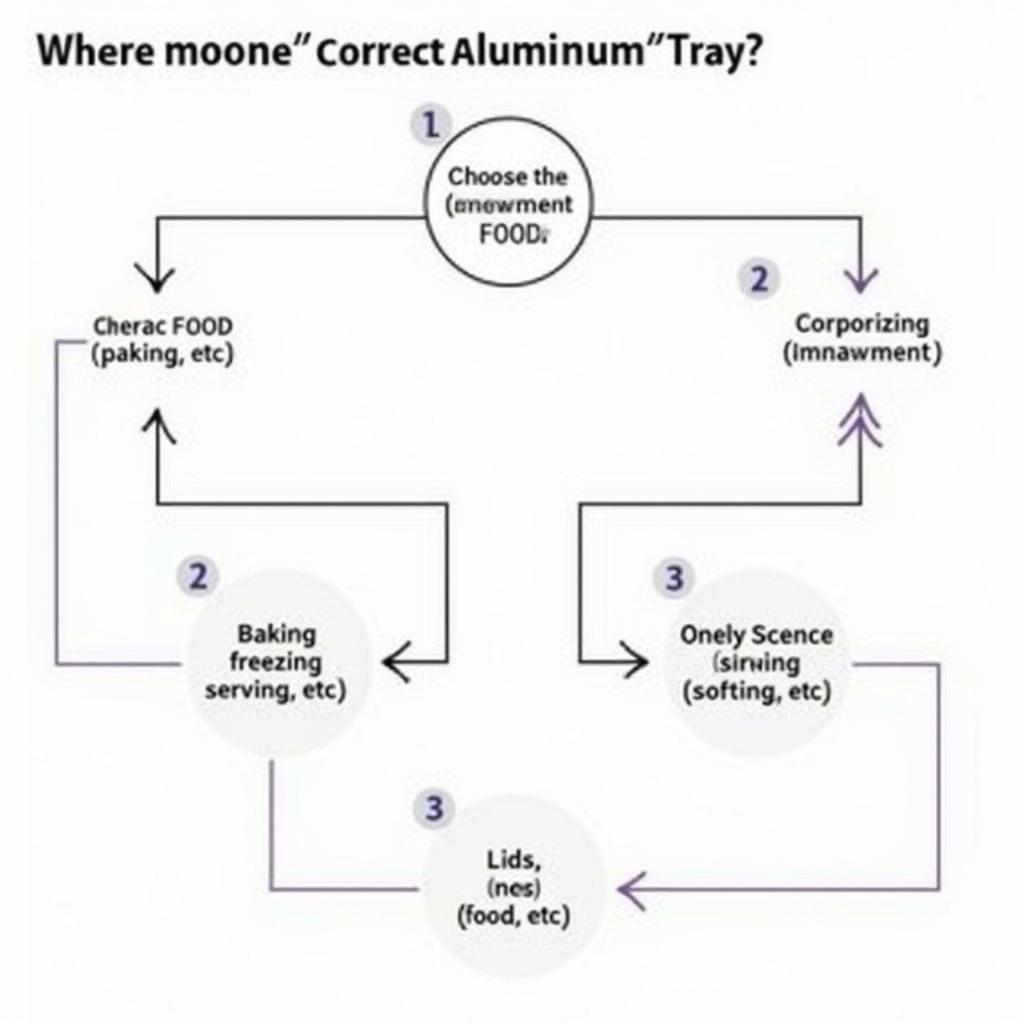Aluminum Trays For Food are a ubiquitous presence in our kitchens and the broader food industry. From simple meal prep to large-scale catering, these versatile containers play a crucial role in food storage, transport, and presentation. This comprehensive guide will delve into everything you need to know about aluminum trays, exploring their benefits, diverse applications, and addressing some common concerns. We’ll even touch on sustainable practices and help you make informed choices about using aluminum trays for food.
Unveiling the Advantages of Aluminum Food Trays
Aluminum trays possess a unique combination of properties that make them an ideal choice for a variety of food-related purposes. Their lightweight nature makes them easy to handle and transport, while their durability ensures they can withstand the rigors of stacking and storage. Aluminum’s excellent thermal conductivity allows for even heating and cooling, making these trays perfect for baking, freezing, and reheating. Further, aluminum trays for food are often recyclable, contributing to a more sustainable approach to food packaging. Not to mention, aluminum food tray can be quite affordable, making them a cost-effective solution for various needs.
Exploring Different Types of Aluminum Trays
Aluminum trays come in a wide array of shapes and sizes, catering to a diverse range of culinary needs. From shallow trays ideal for baking cookies to deep-dish options perfect for casseroles, there’s an aluminum tray for almost any application. Some trays even come with compartment dividers, offering convenient portioning for meal prep or catering events. The availability of different gauges of aluminum also allows you to select the appropriate thickness and sturdiness for your specific use case.
Addressing Concerns about Aluminum and Food Safety
One common question surrounding aluminum trays for food is their safety. It’s important to clarify that modern aluminum trays are often lined with a food-safe coating that prevents the aluminum from coming into direct contact with food. This coating ensures compliance with safety standards and eliminates concerns about potential leaching. However, it’s always advisable to check for any signs of damage to the coating before using the tray. Additionally, acidic foods should not be stored in uncoated aluminum trays for extended periods.
Maximizing the Use of Your Aluminum Trays
Aluminum trays are incredibly versatile, extending far beyond just baking. They are excellent for marinating meats, roasting vegetables, and even serving food at casual gatherings. Their disposable nature makes cleanup a breeze, especially after large events.
Creative Uses for Aluminum Trays Beyond the Kitchen
Think outside the box! Aluminum trays can be repurposed for a variety of non-food applications. They can be used for organizing small items in drawers, creating DIY art projects, or even as makeshift plant trays for seedlings. Their durability and malleability make them surprisingly adaptable for various creative projects.
 Creative Uses for Aluminum Trays
Creative Uses for Aluminum Trays
Proper Disposal and Recycling of Aluminum Trays
Most aluminum trays are recyclable. Be sure to check with your local recycling guidelines for specific instructions. Often, rinsing the tray and removing any large food debris is all that’s needed before placing it in your recycling bin. Choosing recyclable foil food trays is a step towards a more eco-conscious kitchen.
Choosing the Right Aluminum Tray for Your Needs
With so many options available, selecting the right aluminum tray can seem daunting. Consider the intended use, the quantity of food you’ll be handling, and any special features you might require, like compartment dividers. For larger events or catering, stackable food trays can be a great space-saver. If you’re concerned about food safety, prioritize trays with a food-safe coating. Selecting the right folding table for food can also enhance the serving experience when using these trays.
 Choosing the Right Aluminum Tray
Choosing the Right Aluminum Tray
“When choosing aluminum trays, always prioritize food safety. Look for reputable brands that use food-grade materials and adhere to safety standards.” – Dr. Amelia Carter, Food Safety Specialist.
“The versatility of aluminum trays is truly remarkable. They are a staple in my kitchen, not just for cooking but also for organizing and various DIY projects.” – Chef Michael Rossi, Culinary Innovator.
In conclusion, aluminum trays for food are an indispensable tool for anyone working with food. Their versatility, durability, and affordability make them a practical choice for countless applications. By understanding the different types available, addressing safety concerns, and adopting sustainable practices, you can maximize the benefits of these versatile containers.
FAQs
- Are all aluminum trays recyclable? Most are, but always check your local recycling guidelines.
- Can I use aluminum trays in the microwave? Generally, no.
- Are aluminum trays safe for baking? Yes, they are excellent for baking.
- How do I clean aluminum trays? Hand washing is recommended for most types.
- Can I reuse aluminum trays? While possible, they are often intended for single use.
- What are the alternatives to aluminum trays? Alternatives include glass, plastic, and ceramic dishes.
- Where can I buy aluminum trays for food? They are readily available in most grocery stores and online retailers.
Are you looking for food safe packaging materials? We offer a wide variety of options. Learn more on our website about food safe packaging materials.
For any assistance, please contact us at Phone: 02437655121, Email: minacones@gmail.com or visit our address: 3PGH+8R9, ĐT70A, thôn Trung, Bắc Từ Liêm, Hà Nội, Việt Nam. We have a 24/7 customer service team.